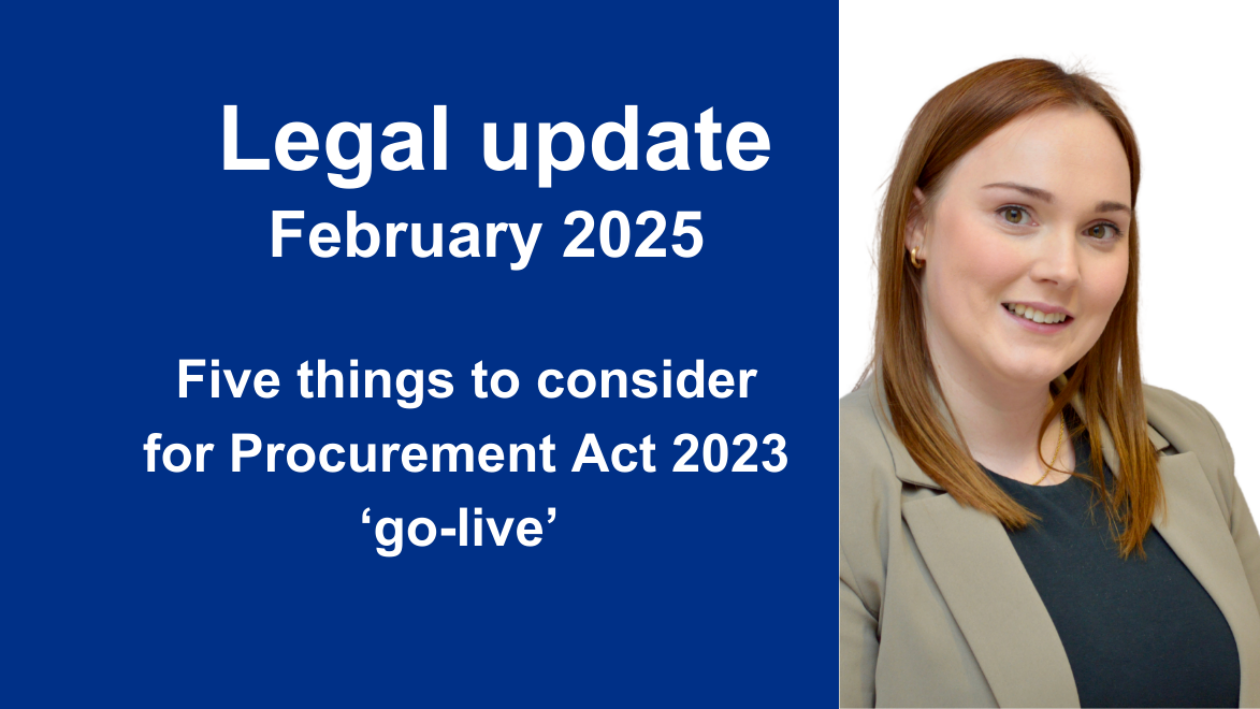It has been a while since the Procurement Bill was first laid in parliament on the 11 May 2022, but we are now within touching distance of the ‘go-live’ date for the Procurement Act 2023, bringing a transformation to the procurement landscape we have been used to.
While in a perfect world all contracting authorities would have completed all the training and be ready to go with new documents and process by the morning of the 24 February, I think we all know that’s unlikely and not a position many will find themselves in!
If you’re not as prepared as you’d hoped to be, have barely started, or keep finding processes you need to change, the (procurement) world will not end on the 24 February. You will have time over the coming months (hopefully not years) to put everything in place. But if you only have time to do one thing before or on ‘go-live’ I’d suggest picking one of the below. If you have a bit more time, nothing is stopping you picking all five … or delegating to your team!
1. Update SFIs
With all NHS trusts and foundation trusts now falling under central government authorities for the purposes of the below threshold value – £12,000 (including VAT) will now be an important number. While you may not necessarily need to undertake a full procurement at this value, you do need to be aware of the implications in terms of notices for anything over this value. Make sure your SFIs reflect these new requirements and all teams are aware.
2. Plan for Below Threshold Notices
Linked to above, £12,000 (or 30,000 for sub-central authorities) will now be a figure that needs to be figuratively burned into your mind. There are two new notices, as we touch on in our newsletter, that you will need to consider for all contracts above this value. It’s important to ensure you have a process in place for who will publish these contracts. While I think it’s unlikely you’ll be doing any large scale procurements close to ‘go-live’, these smaller contracts, which didn’t have the same level of transparency previously, are likely to be the ones that impact you first.
3. Identify framework options
Are there any existing frameworks running under PCR2015 that you can continue to use to award and run competitions under while you’re still getting your head around the new rules? It’s likely there are a few where you may have chosen to not use a framework previously but maybe it would save you some time to do so now. Don’t forget to check out our framework page, to see which ones the Hub operates.
4. Map out your contracts
It’s been a busy 2024 and start to 2025 for procurement! No dramatic changes to procurement since 2015 (maybe even 2006!) and we’ve had two new rules in the space of a year. It’s important to know which contracts you have in place that are being run under PCR2015, PSR and then which will need to go out under the Procurement Act 2023. They each have different requirements and you will want to ensure you are applying the correct rules to the correct contract. It will also be helpful to plan for when your PCR2015 procurements are coming to an end.
5. Start your pipeline
While some notices aren’t coming in straight away, the Pipeline Notice requirement is one you need to get ready for! This will need to be published by the 26 May 2025, or in other terms, 56 days after the start of the financial year. This needs to be published by all contracting authorities who believe they will spend £100,000,000 or more in the coming financial year. The notice must include all contracts with an estimated value of over £2million.
If you have any questions on the above please do get in touch.
